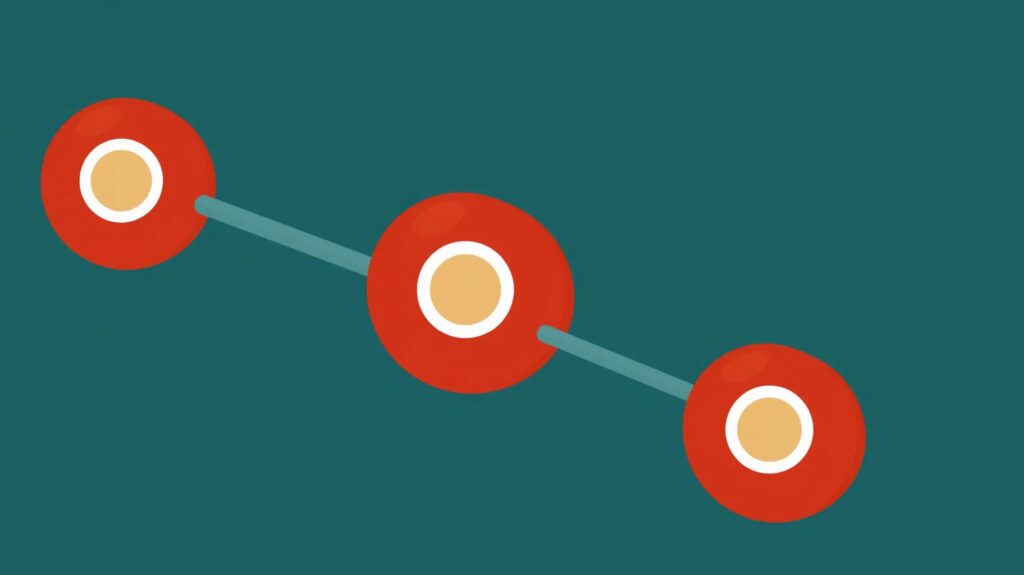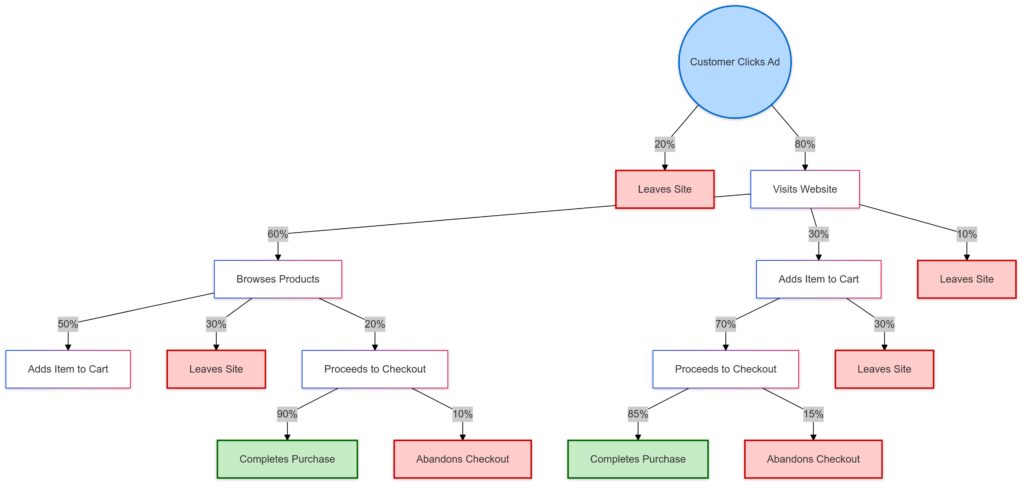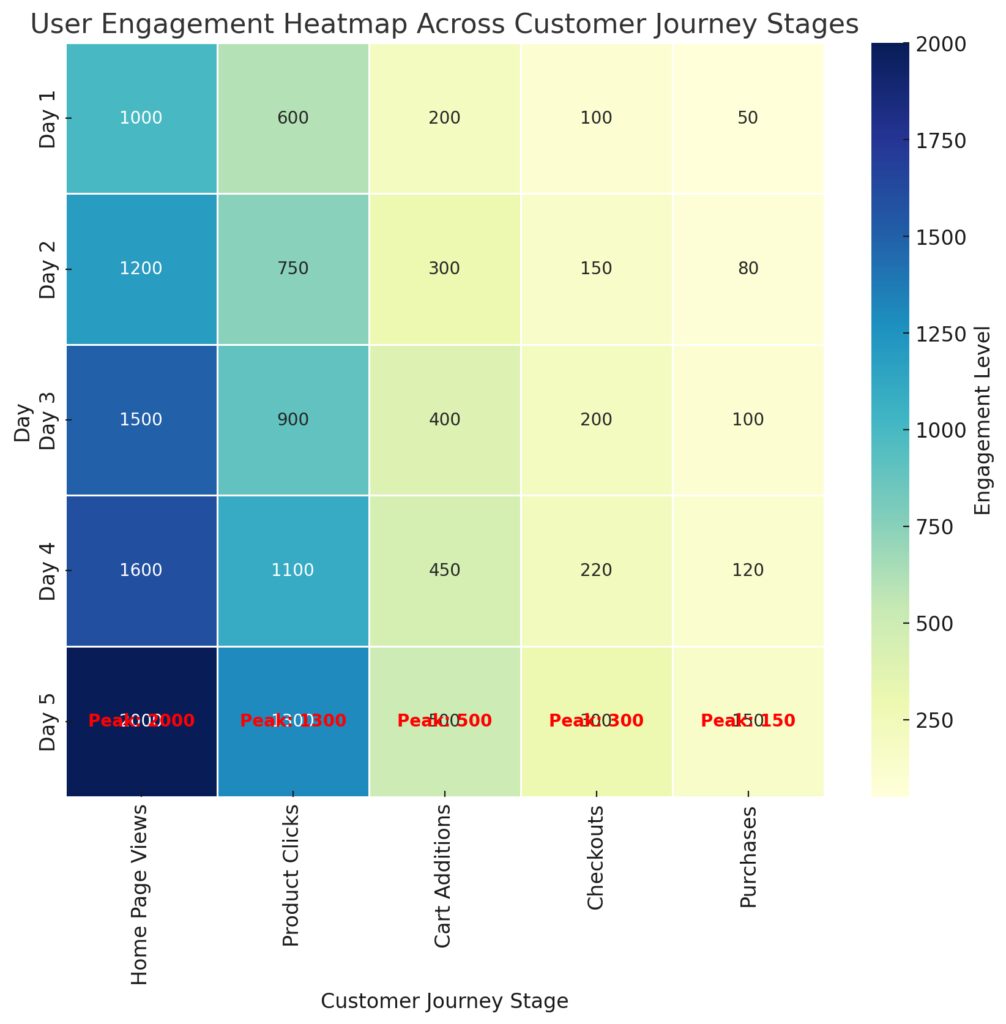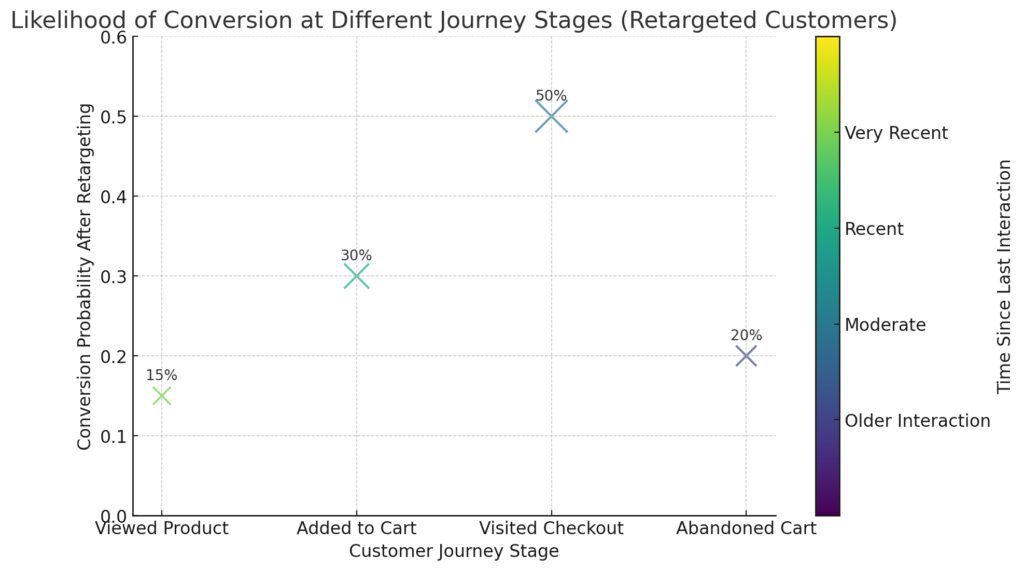
Beyond Randomness: How Markov Chains Model Complex Human Behavior in Social Media and Marketing
Markov chains may sound like an advanced math concept, but they’re surprisingly relevant to our everyday lives—especially in social media and marketing.
This powerful model helps break down human behavior patterns in a way that allows marketers to predict what we might do next based on what we’ve done before. If you’ve ever wondered how companies seem to know your next move, you’re in the right place.
What Are Markov Chains and Why Do They Matter?
A Quick Overview of Markov Chains
At their core, Markov chains are models used to predict sequences of events where each event depends on the previous one. Imagine flipping through a series of choices, where each step only depends on the last choice you made. This setup, called the “memoryless” property, means that Markov chains focus on short-term dependencies—what happened before influences what happens next, but nothing further back is relevant.
In marketing, this is incredibly valuable. Brands want to know your next likely click, and Markov chains help them do just that by analyzing common paths of action, such as the steps someone takes before they decide to make a purchase.
Applying Markov Chains to Social Media
Social media interactions are ideal for Markov chains. Consider platforms where users move from liking a post to commenting or sharing it. With thousands of users making choices within predictable paths, marketers can track sequences to create highly accurate predictions. Each decision—like, comment, or share—acts as a “state,” while each move from one action to another forms a link in the chain.
By identifying these patterns, social platforms can recommend relevant content, target ads, or even predict trending topics, improving user engagement and satisfaction.
Why Markov Chains Aren’t Just for Predicting Clicks
You might think that these models are only for tracking clicks, but Markov chains dive much deeper. They can model diverse behaviors like how frequently users engage with brands, how they respond to new content formats, and which offers they’re most likely to redeem. This ability to fine-tune predictions based on user preferences makes Markov chains a favorite in marketing and advertising.
Markov Chains and Predictive Analytics in Marketing
How Markov Chains Power Targeted Campaigns
For marketers, understanding the probability of customer actions is invaluable. Markov chains give brands a way to measure which campaigns are most effective in converting users. If, for example, a user who clicks on an Instagram ad is likely to visit the website but only sometimes makes a purchase, marketers can use a Markov model to determine which follow-up actions—such as sending a targeted email—are most likely to close the sale.
These insights are also used in retargeting campaigns. If a potential customer frequently navigates toward a product page but never completes a purchase, a Markov chain model can assess the chance of them returning. This way, marketers can strategically place reminders, like pop-up ads, at precisely the moment they’re most likely to convert.

Exit Paths (in red): Where customers leave or abandon the journey.
Purchase Completion (in green): Successful conversions.
Using Markov Chains for Customer Retention
Customer loyalty is crucial, and here, too, Markov chains play a major role. By studying user behavior, companies can identify when a customer is likely to disengage. If someone starts skipping newsletters or stops logging in, a Markov model can calculate the likelihood of them churning and suggest a proactive response.
Marketers can then send a retention-focused message—perhaps with a discount or a personalized offer—at the optimal moment. The Markov model helps predict the ideal timing and content for re-engagement, ensuring the brand remains relevant in the customer’s eyes.
Predicting User Journeys with Markov Chains
Every action taken by a user creates a breadcrumb trail of behavior. Markov chains analyze these trails to anticipate future interactions. In social media, if a person frequently likes fitness posts, shares health tips, and saves workout videos, Markov models may predict a high likelihood of engagement with certain brands or health products.
This is particularly useful for creating customized content recommendations. By knowing which journeys users are likely to take, brands and platforms can create tailored experiences, improving user satisfaction and increasing the odds of engagement.
Real-World Examples: Markov Chains in Action on Social Media

How Facebook and Instagram Use Markov Chains
Platforms like Facebook and Instagram employ Markov chains to study user engagement patterns. Every click, like, and share is another data point in a Markov model, revealing which types of posts people are most likely to interact with next. This analysis shapes content feeds and ad placement, ensuring users see posts that align with their interests and keeping them on the platform longer.
On Instagram, for example, if a user frequently likes travel photos, they’re more likely to see similar content in their feed. This isn’t random; it’s based on predictive modeling through Markov chains, which ensures a personalized experience that keeps users engaged.
YouTube’s Suggested Videos Algorithm
Another powerful application is YouTube’s video recommendation algorithm. When you watch a video, YouTube suggests the next one based on similar viewers’ patterns. This “next video” suggestion is influenced by a Markov model, where each video you watch adds to a chain of potential actions. By tracking which videos are often watched sequentially, YouTube can predict which ones will keep users on the platform longer.
This isn’t just about engagement, though. For advertisers, this predictive power means ads can be better targeted, increasing conversion rates while keeping the user experience seamless.
Snapchat’s Stories and Streaks
Snapchat’s Streaks feature is designed to encourage daily interactions between friends. Markov chains model these behaviors by analyzing patterns in message frequency and timing. The app then uses this information to keep users engaged by sending reminders when a streak is about to expire. This small nudge helps Snapchat build habitual usage, which benefits advertisers by increasing user activity and exposure time.
In a marketing sense, this is also key for companies that advertise on Snapchat, as they rely on these high-engagement patterns to maximize ad impressions and brand visibility.
Using Markov Chains to Craft Personalized Content Experiences
Tailoring Content to Individual Preferences
In a crowded digital landscape, personalized content is king. Markov chains make it possible to predict user preferences based on past behavior. For example, if a user consistently clicks on health and wellness posts, a brand can use this data to display similar content, helping increase relevance and engagement.
This approach goes beyond just recommending topics—it adapts to the user’s unique engagement patterns. If the data shows a user prefers video content over text-based posts, a Markov model can suggest more videos. By aligning content with predicted preferences, brands improve their chances of holding the user’s attention.
Adapting Marketing Messages in Real-Time
In digital marketing, agility is critical. With Markov chains, companies can respond to user behavior in real-time. For example, if a customer engages with a particular type of product, such as outdoor gear, a Markov model can predict when they’re likely to make a purchase and recommend the ideal time to display related ads.
Real-time adaptability is also valuable in automated marketing, where Markov chains guide follow-up actions. Imagine a user who views a product but doesn’t complete the purchase. A Markov chain can suggest sending a reminder email or a discount offer at the optimal time, increasing the chance of conversion.
The Role of Markov Chains in Customer Journey Mapping

Tracking the Path from Discovery to Conversion
Mapping the customer journey is essential for creating effective marketing strategies. Markov chains help by breaking down the complex paths users take as they discover, consider, and eventually purchase a product. By analyzing large datasets, Markov models can identify the most common touchpoints that lead to conversions, allowing brands to refine these pathways.
This is especially helpful for e-commerce sites. If certain steps in the user journey—such as viewing product details or reading reviews—are more likely to lead to a sale, companies can emphasize these stages in their design and content, nudging users toward a final purchase.

Initial Engagement: Starts with 2000 users visiting the product page.
Conversion Pathways:Adds to Cart: 800 proceed here, with an even split between proceeding to checkout and abandoning the cart.
Checkout Completion: 300 users complete the purchase.
Identifying Key Moments of Engagement
Markov chains shine in identifying key engagement moments, or “micro-conversions,” that move users closer to making a purchase. For instance, liking a post, adding an item to a wish list, or sharing a product link can each represent a different state in the Markov chain.
By mapping these micro-conversions, marketers can optimize the customer journey at each stage. For example, if data shows users who add items to their wish list are likely to buy within a week, a follow-up email with a special offer might be sent automatically to encourage conversion.

Stages: Ranges from home page views, product clicks, cart additions, checkouts, to purchases.
Color Gradient: Reflects engagement levels from low (light) to high (dark).
Callout Boxes: Mark the peak engagement at each stage with red labels for easy identification.
Challenges and Ethical Considerations of Using Markov Chains in Marketing
Balancing Personalization with Privacy
With greater data comes greater responsibility. As powerful as Markov chains are, their use in marketing raises important ethical questions about privacy. Tracking user actions to predict behavior can feel invasive if not done transparently. To maintain user trust, companies must be upfront about their data collection practices and ensure users have control over their data.
This means finding a balance between offering personalized experiences and respecting privacy. For instance, many companies now include options for users to control the types of ads they see, or even opt-out of certain data tracking practices entirely.
Avoiding Over-Targeting
While it’s tempting to leverage Markov predictions to the fullest, over-targeting can backfire. If users are bombarded with overly specific ads based on their every click, they may feel uncomfortable or overwhelmed. This creates a paradox: the more precise the targeting, the higher the risk of user fatigue.
To counter this, brands should use Markov insights judiciously, focusing on enhancing the user experience rather than aggressively pushing products. Thoughtful use of Markov chains respects the user’s autonomy while still guiding them toward actions that benefit both them and the brand.
Markov chains are transforming how marketers understand and anticipate human behavior on social media and beyond. By tapping into these advanced models, brands can not only predict user behavior but also create marketing experiences that feel tailored and seamless. The key is to use these predictions responsibly, balancing personalization with respect for user privacy.
Future Trends: Markov Chains in AI-Powered Marketing

Integrating AI and Markov Chains for Smarter Marketing
The combination of Markov chains with artificial intelligence is expanding the possibilities of predictive marketing. AI can process vast amounts of behavioral data and identify patterns with incredible precision, while Markov chains add the structure needed to predict the next steps in a customer’s journey. This synergy allows brands to build smart recommendation engines that refine suggestions based on each user’s unique profile.
AI-driven Markov chains are also powering conversational AI, such as chatbots. These bots can respond with greater accuracy by predicting user inquiries and needs based on the immediate context, creating a more natural and satisfying interaction.
Moving Toward Real-Time, Cross-Platform Marketing
With the rise of cross-platform usage, users are interacting with brands on multiple channels—from websites and social media to email and in-store. Markov chains are making it possible for companies to track and predict user behavior across these channels, ensuring a consistent experience that follows users no matter where they go. If a customer browses a product on Instagram and then visits the brand’s website, a Markov chain model can anticipate the likelihood of them making a purchase based on the full scope of their activity.
Real-time, cross-platform analysis is quickly becoming essential for modern marketing. With Markov models predicting user actions as they unfold, brands can make in-the-moment adjustments to their messaging, ensuring each interaction is as relevant and timely as possible.
A Glimpse Into Ethical AI and Predictive Modeling
As predictive models become more powerful, ethical concerns are taking center stage. The question of transparency—making sure users understand how their data is being used—is increasingly crucial. Markov chains, like other predictive tools, can be applied responsibly by offering users opt-in choices and clearly explaining data collection methods.
In the future, companies using these models may find it beneficial to adopt ethical AI standards, ensuring that predictive marketing practices are transparent, respectful, and in line with user expectations. Building a trusted relationship with consumers will be key as the technology advances, especially as users become more aware of the data footprint they leave online.
Markov chains are driving a shift in how brands predict, personalize, and respond to customer needs. These models allow for data-driven insights that go beyond randomness, tapping into the subtle patterns of human behavior. While Markov chains enable marketers to be more precise and proactive, the future will demand thoughtful and ethical applications that honor user privacy and autonomy. When used responsibly, these models pave the way for a new level of engagement and loyalty in digital marketing.
FAQs
How do social media platforms use Markov chains?
Social media platforms use Markov chains to analyze user interactions and anticipate their next moves, such as liking, sharing, or commenting on content. Each action creates a “state” that connects to the next likely action, helping platforms tailor content feeds and recommend posts to keep users engaged. For example, if someone frequently watches cooking videos, the platform might predict similar content as the next recommendation.
Why are Markov chains important for digital marketing?
Markov chains are critical in digital marketing because they provide data-driven insights into customer journeys. By analyzing sequences of user actions, marketers can predict which campaigns, product pages, or social media posts are most effective in moving customers toward conversion. This predictive power allows brands to optimize user journeys, personalize experiences, and even automate follow-ups, like sending reminder emails to users who leave items in their cart.
Can Markov chains improve ad targeting?
Yes, Markov chains improve ad targeting by predicting when and where a user is most likely to respond positively to an ad. By analyzing a user’s past actions, such as which types of posts they engage with or which products they view, a Markov chain model can help determine the best time and place to display an ad. This ensures ads feel relevant and timely, increasing the chances of user engagement.

What are the privacy concerns with Markov chains?
Privacy concerns arise with Markov chains when user data is tracked and analyzed without full transparency. Since Markov chains rely on user actions to predict behavior, they require data about individual preferences and habits. Ethical use of this technology means providing users with clear options to manage their data and ensuring they know how their behavior is being used in predictions. Adhering to privacy standards is key to maintaining trust.
Can Markov chains be applied to customer retention strategies?
Yes, Markov chains are highly effective for customer retention. By analyzing patterns in user activity, brands can predict when a customer may be losing interest. For example, if a subscriber stops opening emails or interacting with content, a Markov chain can identify this as a signal of potential churn. Marketers can then respond with retention strategies, such as personalized offers, to re-engage the customer at a critical moment.
How do Markov chains differ from other predictive models?
Markov chains differ from other predictive models in that they focus on short-term dependencies, meaning each step only depends on the last one. In contrast, many other models might consider a user’s full history or multiple factors at once. This makes Markov chains ideal for tracking immediate behavior sequences, like the series of clicks or actions a user takes on a website, rather than long-term behavioral trends.
Are Markov chains effective for cross-platform marketing?
Absolutely, Markov chains are increasingly used in cross-platform marketing. As users interact with brands across multiple channels, Markov models help track behavior from one platform to the next, offering insights into the customer journey across social media, email, websites, and more. This ensures users receive a seamless, relevant experience no matter where they engage, and allows brands to make real-time adjustments to keep interactions consistent.
How can Markov chains be used responsibly in marketing?
To use Markov chains responsibly, brands should focus on transparency and user consent. This means clearly explaining how user behavior is tracked, offering users control over their data, and avoiding overly invasive targeting. By using predictive models like Markov chains to enhance user experience, rather than push products aggressively, marketers can maintain ethical standards while still benefiting from the model’s powerful predictive capabilities.
How can Markov chains enhance personalization on social media?
Markov chains allow social media platforms to tailor content based on short-term user behavior. For example, if someone engages frequently with posts about fitness, a Markov model can predict they’ll be interested in similar content, suggesting posts, videos, or ads aligned with this interest. By following these patterns, platforms provide personalized feeds that keep users engaged.
Are Markov chains used in recommendation engines?
Yes, Markov chains are widely used in recommendation engines for sites like YouTube, Netflix, and Spotify. These platforms analyze user behavior—such as viewing, skipping, or replaying content—and use Markov models to predict what users are likely to watch or listen to next. By basing recommendations on recent activity, these engines keep suggestions fresh and relevant.
How do Markov chains help optimize user journeys?
Markov chains map user actions as paths through a website or app, showing the most common routes taken to reach a goal, like a purchase. This information helps marketers identify the ideal steps users follow and optimize touchpoints accordingly. For example, if users often check reviews before buying, brands can make reviews more visible to improve the journey flow and increase conversions.
Can Markov chains help identify high-value customers?
Markov models can identify patterns in customer behavior that correlate with high-value actions, such as frequent purchases or high engagement. By tracking the sequence of actions these customers take, companies can pinpoint the factors that contribute to loyalty and target these behaviors in future campaigns. This helps brands focus on retaining high-value customers by offering personalized experiences that cater to their specific interests.
How do Markov chains improve retargeting strategies?
Markov chains strengthen retargeting campaigns by identifying the exact sequence of actions that lead to conversions. For example, if a user browses products without purchasing, a Markov model can assess the likelihood of them returning. Brands can then retarget with personalized ads or offers, strategically placed to bring the user back at the right time, increasing the chances of conversion.

Stages: Each bubble represents a stage, such as “Viewed Product” or “Added to Cart.”
Bubble Size: Reflects the probability of conversion after retargeting (larger bubbles indicate higher conversion probabilities).
Color Gradient: Indicates time since the last interaction, with lighter colors showing more recent interactions and darker colors representing older ones.
Are Markov chains limited to online interactions?
No, Markov chains are also applicable to offline customer behaviors, like in-store purchases or call center interactions. By integrating offline data, brands can build a complete view of the customer journey, predicting offline actions based on both digital and physical interactions. This holistic approach allows for seamless marketing experiences that bridge the online-offline gap.
Can small businesses benefit from Markov chains?
Absolutely. Markov chains are valuable for businesses of any size. For small businesses, these models can offer affordable ways to gain insight into customer behavior, optimize marketing efforts, and personalize user experiences. Even with limited data, small businesses can use Markov predictions to improve engagement, prioritize key customer touchpoints, and build loyalty.
What skills are needed to work with Markov chains in marketing?
Understanding data science, statistics, and programming is essential for working with Markov chains, especially for building and analyzing models. Familiarity with tools like Python and R, and concepts like probability and machine learning, are also valuable. However, many companies use automated platforms to make these insights accessible without in-depth technical skills.
How can companies ensure ethical use of Markov chains?
Companies should prioritize user transparency, data protection, and ethical targeting. This involves informing users about data collection and how it supports personalized recommendations, while offering opt-out options and respecting privacy preferences. Adopting ethical standards not only protects users but also enhances brand trust and customer loyalty over time.
Resources
Research Papers
- Customer Journey Analytics: Markov Chains and Applications in Digital Marketing (Journal of Marketing Research)
A detailed paper on Markov chain applications in mapping and predicting digital customer journeys. Subscription required. - Predicting Consumer Behavior with Markov Models (IEEE)
Technical analysis of how Markov chains are used for consumer behavior prediction. This paper provides deeper insight for those interested in the methodology. Subscription required. - Social Media Engagement and User Behavior Modeling with Markov Chains (International Journal of Information Management)
Examines how social media platforms leverage Markov chains to analyze user behavior patterns. Subscription required.